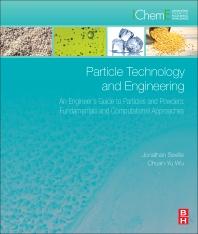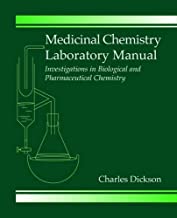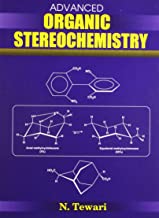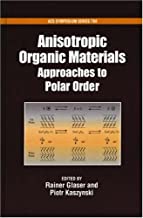Particle Technology and Engineering, An Engineer’s Guide to Particles and Powders: Fundamentals and Computational Approaches
Original price was: ₹9,264.00.₹7,411.20Current price is: ₹7,411.20.
ISBN: 9780080983370
Author/Editor: Seville
Publisher: Elsevier
Year: 2016
1 in stock (can be backordered)
Description
Particle Technology and Engineering presents the basic knowledge and fundamental concepts that are needed by engineers dealing with particles and powders. The book provides a comprehensive reference and introduction to the topic, ranging from single particle characterization to bulk powder properties, from particle-particle interaction to particle-fluid interaction, from fundamental mechanics to advanced computational mechanics for particle and powder systems.
The content focuses on fundamental concepts, mechanistic analysis and computational approaches. The first six chapters present basic information on properties of single particles and powder systems and their characterisation (covering the fundamental characteristics of bulk solids (powders) and building an understanding of density, surface area, porosity, and flow), as well as particle-fluid interactions, gas-solid and liquid-solid systems, with applications in fluidization and pneumatic conveying. The last four chapters have an emphasis on the mechanics of particle and powder systems, including the mechanical behaviour of powder systems during storage and flow, contact mechanics of particles, discrete element methods for modelling particle systems, and finite element methods for analysing powder systems.
This thorough guide is beneficial to undergraduates in chemical and other types of engineering, to chemical and process engineers in industry, and early stage researchers. It also provides a reference to experienced researchers on mathematical and mechanistic analysis of particulate systems, and on advanced computational methods.
Provides a simple introduction to core topics in particle technology: characterisation of particles and powders: interaction between particles, gases and liquids; and some useful examples of gas-solid and liquid-solid systems
Introduces the principles and applications of two useful computational approaches: discrete element modelling and finite element modelling
Enables engineers to build their knowledge and skills and to enhance their mechanistic understanding of particulate systems
Additional information
| Weight | 0.59 kg |
|---|
Product Properties
| Year of Publication | 2016 |
|---|---|
| Table of Contents | Chapter 1. Introduction 1.1. What Are Particles? 1.2. What Is Known? 1.3. Computational Modeling 1.4. What Are the Applications? Chapter 2. Bulk Solid Characterization 2.1. Density 2.2. Surface Area 2.3. Flowability 2.4. Compressibility 2.5. Compactibility Chapter 3. Particle Characterization 3.1. Particle Shape 3.2. Particle Size 3.3. Sampling for Shape and Size Characterization Chapter 4. Particles in Fluids 4.1. Settling of a Single Isolated Particle in a Continuous Fluid 4.2. Drag Force on an Isolated Particle (Seville et al., 1997) 4.3. Calculation of the Terminal Velocity 4.4. Other Shapes 4.5. Acceleration and Unsteady Motion2 4.6. Curvilinear Motion 4.7. Assemblies of Particles Chapter 5. Gas?olid Systems 5.1. Gas?olid Contact Regimes?he Whole Picture 5.2. Flow Through a Packed Bed 5.3. Fluidization 5.4. Pneumatic Conveying 5.5. Gas?olid Separation? Chapter 6. Liquid?olid Systems 6.1. Rheology of Suspensions 6.2. Pastes 6.3. Agglomeration Chapter 7. Mechanics of Bulk Solids 7.1. Friction and the Coulomb Model 7.2. Stress Analysis in Storage Vessels 7.3. Stress Analysis for Compression of a Powder Bed 7.4. Discharge Dynamics?opper Flow Chapter 8. Particle?article Interaction 8.1. Interaction of Elastic Particles 8.2. Interaction of Elastic-Plastic Particles 8.3. Interaction of Particles with Adhesion 8.4. Interaction of Particles with Liquid Bridges Chapter 9. Discrete Element Methods 9.1. Hard-Sphere and Soft-Sphere DEMs 9.2. The Principle of DEM 9.3. Data Analysis 9.4. Applications Chapter 10. Finite Element Modeling 10.1. Modeling of Particle?article Interaction 10.2. Multiple Particle Finite Element Modeling 10.3. Continuum Modeling of Powder Compaction |
| Author | Seville |
| ISBN/ISSN | 9780080983370 |
| Binding | Hardback |
| Edition | 1 |
| Publisher | Elsevier |
You must be logged in to post a review.






Reviews
There are no reviews yet.